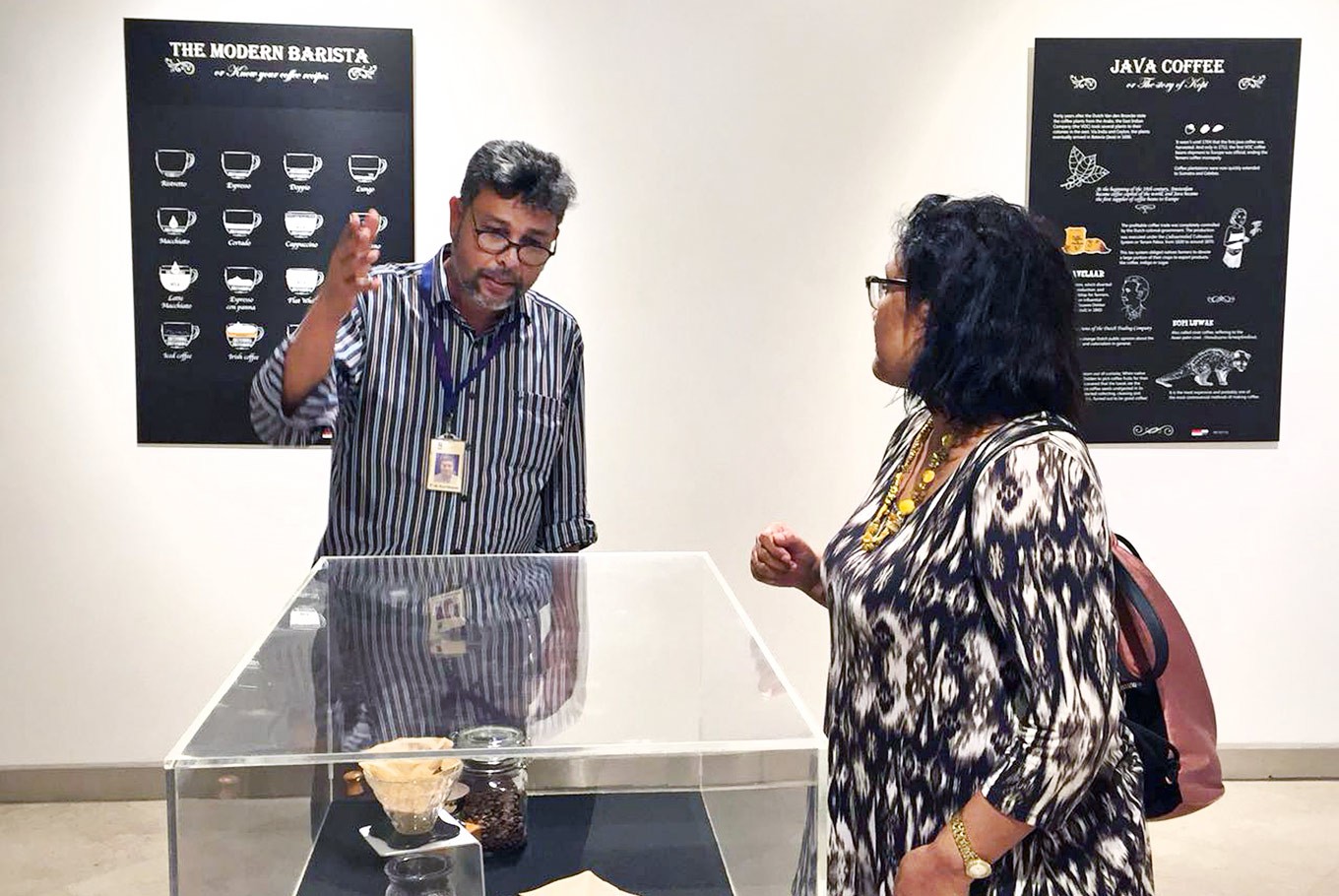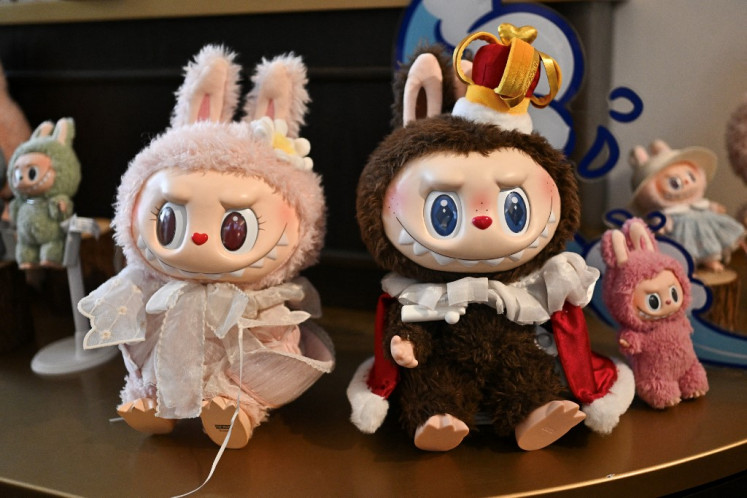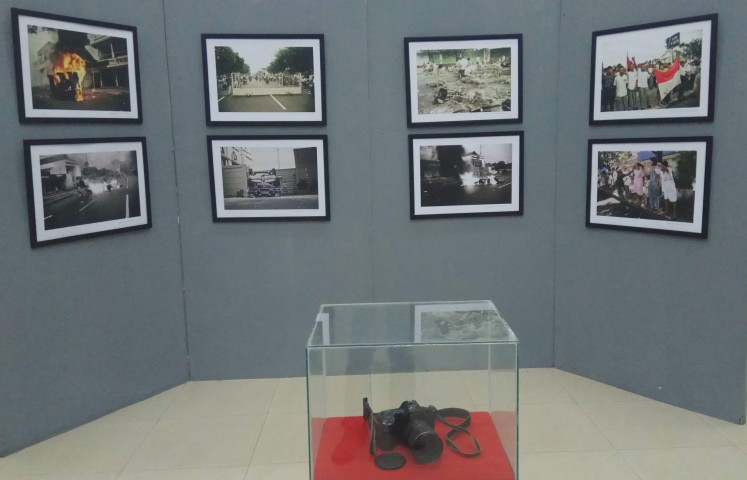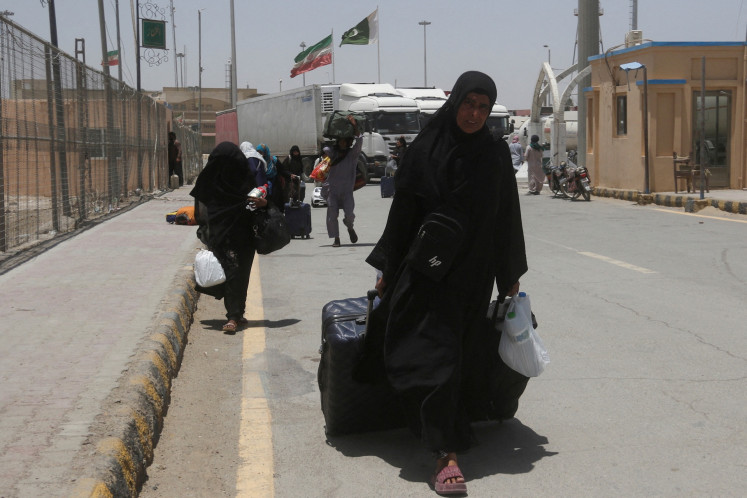Popular Reads
Top Results
Can't find what you're looking for?
View all search resultsPopular Reads
Top Results
Can't find what you're looking for?
View all search resultsHow coffee went from the hands of the Dutch to the world
The story sees Indonesia and the Netherlands cross paths in 1616, when Pieter van den Broecke, a merchant and administrator of the VOC at the time, stole coffee plants from plantations in Mocha, Yemen.
Change text size
Gift Premium Articles
to Anyone
 Coffee story: Bob Wardhana (left), project manager of an exhibition called A History of Coffee, speaks to a visitor at the Erasmus Huis Dutch cultural center in Kuningan, South Jakarta. The exhibition started on Jan. 8 and will run through Jan. 21. (Erasmus Huis/File)
Coffee story: Bob Wardhana (left), project manager of an exhibition called A History of Coffee, speaks to a visitor at the Erasmus Huis Dutch cultural center in Kuningan, South Jakarta. The exhibition started on Jan. 8 and will run through Jan. 21. (Erasmus Huis/File)
D
utch cultural center Erasmus Huis in Kuningan, South Jakarta, is playing host to the exhibition A History of Coffee through Jan. 21 to celebrate the history of this much-loved commodity.
The pop-up exhibit is being held in collaboration with the Hortus botanical gardens in Amsterdam to display a range of coffee plants and seeds that were once traded by the Dutch East India Company (VOC).
“The story of coffee is one of our key stories in the garden here,” said Barbara van Amelsfort, head of the Hortus’ marketing and communications department.
“A request came from the director of the Erasmus Huis to the Hortus. They asked us if we would be able to help them with an exhibition on the story of coffee.”
Amelsfort said she hopes visitors of the exhibition would be able to appreciate the fact that coffee was not just an ordinary cultured custom.
“It is a beautiful and turbulent story of how one small plant travels all over the world, creates thieves, causes country feuds, disrupts economic systems and becomes the most common good in the world,” she said.
The story sees Indonesia and the Netherlands cross paths in 1616, when Pieter van den Broecke, a merchant and administrator of the VOC at the time, stole coffee plants from plantations in Mocha, Yemen.
The coffee plants were then brought to Amsterdam.
Coffee traders back then wanted to preserve their coffee monopoly. Any fertile seeds or living plants were not allowed to be exported out of the Arabian Peninsula. Competition became intense due to coffee’s global popularity.
However, the climate in the Netherlands was not suitable for large-scale coffee cultivation. In 1696, the VOC successfully shipped its first live coffee plants to Batavia, which is now Jakarta.
Ten years later, the VOC took the coffee seeds from Batavia to Amsterdam. Small coffee plants and seeds were also grown at the Hortus, one of Europe’s oldest botanic gardens.
In the early 18th century, Amsterdam became the world’s coffee capital thanks to the coffee beans supplied from Java to Europe. The coffee trade was profitable and was under the control of the Dutch colonial government.
The government then implemented the Cultuurstelsel (cultivation system), which obliged farmers to pay the Dutch treasury with their labor or crops, like coffee.
Eduard Douwes Dekker, a Dutch writer who went by the pen name Multatuli, wrote a novel titled Max Havelaar in 1860 that criticized Cultuurstelsel and helped change the Dutch public opinion about the system.
A Story of Coffee at the Erasmus Huis features six chalkboards with facts about coffee placed against the wall. It also displays manual coffee brewing equipment for traditional and modern coffee shops in two separate glass cases.
Inspired by the interior design of modern coffee shops, the chalkboards were designed in the Netherlands and sent to Indonesia through Hortus’ digital highways.
According to Bob Wardhana, the exhibition’s project manager, the chalkboard’s whimsical handwritten descriptions would be relatable to its readers as they give the impression of a learning process.
Also, the fact that chalkboards can be easily erased teaches us not to forget what has passed, he said.
“By reading its history, we can understand the coffee that we enjoy,” he explained, adding that the coffee trend in Indonesia was a driving force of the exhibition.









